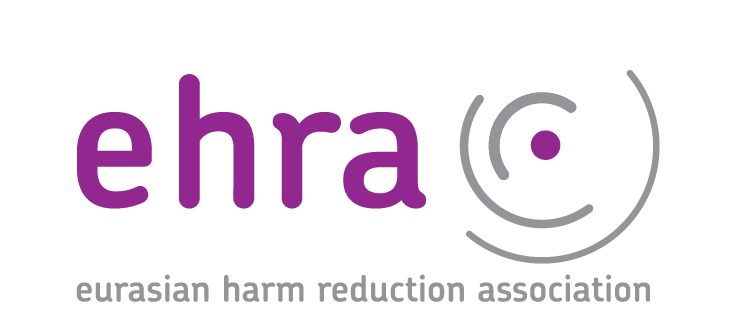Transition: we need to act fast
- 31.10.2016 03:31
- Post Views: 1,631
Besides information on countries’ eligibility for funding for 2017-2019 and dates of the nearest applications consideration, Global fund also shared information on which countries should start getting prepared for transition to national funding.
Recognizing a successful transition takes time and preparation, the Global Fund strongly encourages countries to start planning for transition at least 10 years before funding for disease components is projected to end.

Source: Projected Transitions from Global Fund support by 2025 – projections by component, The Global Fund to Fight AIDS, Tuberculosis and Malaria, October 2016
Early planning can help proactively address common challenges and bottlenecks to transition, including procurement of critical commodities, legislative or regulatory changes to allow contracting with civil society organizations, and addressing the prevention, treatment, care and support needs of key and vulnerable populations.
Thus, Global fund recommends all countries with upper middle income regardless disease burden and countries with lower middle income and low or moderate disease burden to start transition process or active preparation to last funding in the period of 2017-2019.
To support this planning GF prepared list of country components projected to transition fully from Global Fund financing by 2025 due to improvements in income classification and based on current eligibility criteria. This information is provided as additional resource and is not legally binding statement or definition of GF policy.
A country’s eligibility for Global Fund financing is based on a) its income classification as determined by the World Bank5 and b) disease burden indicators for HIV, tuberculosis and malaria, which are periodically revised by the Global Fund and measured according to the latest available official data provided by WHO and UNAIDS. Components become ineligible if:
- A country moves to high income status;
- A country moves to upper-middle income (UMI) status and disease burden for a component is low or moderate;
- Disease burden for a component decreases to low or moderate in a country classified as UMI;
- A country is a member of the Group of 20 (G20) countries and moves to UMI status, and the disease burden for a component is less than extreme;
- A country becomes a member of the Organisation for Economic Co-operation and Development’s (OECD) Development Assistance Committee (DAC).
All UMI countries regardless of disease burden and all LMI country components with low or moderate disease burden that have existing grants, and where sustainability and transition planning is a priority, that are within the EECA region, are listed here:
Components with existing grants and classified as LMI with low or moderate disease burden or UMI

Adapted from: Projected Transitions from Global Fund support by 2025 – projections by component, The Global Fund to Fight AIDS, Tuberculosis and Malaria, October 2016
To further support advanced planning, the Global Fund has produced a list of country components projected to transition fully from Global Fund financing by 2025 due to improvements in income classification and based on current eligibility criteria.
What the transition projections are:
A resource that can be used, along with additional information, to inform long-term national program planning for successful transition from Global Fund financing.
these projections are not intended as binding determinations or statements of Global Fund policy, and are only provided as an additional resource to assist countries in transition planning.
These projections are indicative, based on the latest available information, and will be updated annually with the most recent data.
In total, 24 countries are projected to transition in at least one component by 2025, with 13 countries projected to transition fully away from Global Fund financing. Out of these, 6 are in EECA region. Please see the table below for details.
Transition Projections

Adapted from: Projected Transitions from Global Fund support by 2025 – projections by component, The Global Fund to Fight AIDS, Tuberculosis and Malaria, October 2016
Given potential changes in GNI, disease burden, and Global Fund Eligibility Policy, the Global Fund encourages all countries approaching transition to actively plan for sustainability. The Global Fund will support these countries through co-financing and application focus requirements in order to guide investments toward successful transitions.
More detailed information, including information about countries of other regions and the methodology of transition projection can be found in English in this document.
Related News
Measuring the sustainability of opioid agonist therapy (OAT) – a guide for assessment in the context of donor transition
This Guide was initiated by the Eurasian Harm Reduction Association to provide countries with an approach and tools to assess their progress in building the sustainability of opioid agonist treatment (OAT) within the context of donor transition. This material builds upon previous assessment frameworks and experiences in measuring sustainability and transition readiness in the areas […] Read moreGlobal Fund funding opportunity – COVID-19 Response Mechanism
The COVID-19 Response Mechanism (C19RM), approved in April 2020, authorizes US$500 million in funding in addition to grant flexibilities. C19RM can be used across the three diseases and the health system, even if a country only has a single Global Fund grant for one component. The CCM will assess the most urgent needs and direct […] Read moreCOVID-related Funding Opportunities for Civil Society Working on HIV, TB, Malaria, Gender and Human Rights
We would like to share with you the information about few COVID-related Funding Opportunities available for Civil Society Working on HIV, TB, Malaria, Gender and Human Rights in EECA. Post Views: 3,219 Read moreServices for migrants and refugees from Ukraine – HIV/TB care with a focus on key populations
Due to the increasing flows of refugees from Ukraine because of Russia’s invasion of Ukraine, the EECA Regional Platform created a spreadsheet to fill contacts details of face-to-face and online services for refugees and migrants (with a focus on HIV/TB care and key population groups).
Regional Platform – EECA
This web-resource is a part of new regional communication and coordination project “Regional Civil Society and Community Support, Coordination and Communication Platform - EECA”, implemented by Eurasian Harm Reduction Association (EHRA).
Tags
See also
-
EECA’s Regional Platform monthly Newsletter #19, December 2025 15.12.2025 10:59
-
EECA’s Regional Platform monthly Newsletter #18, November 2025 26.11.2025 16:20







